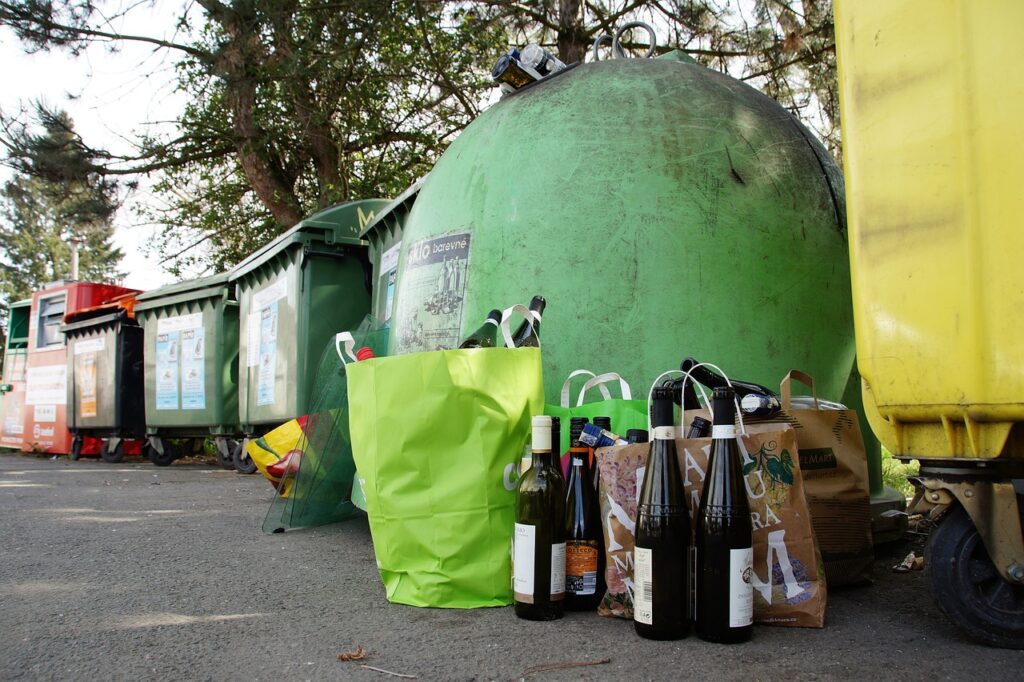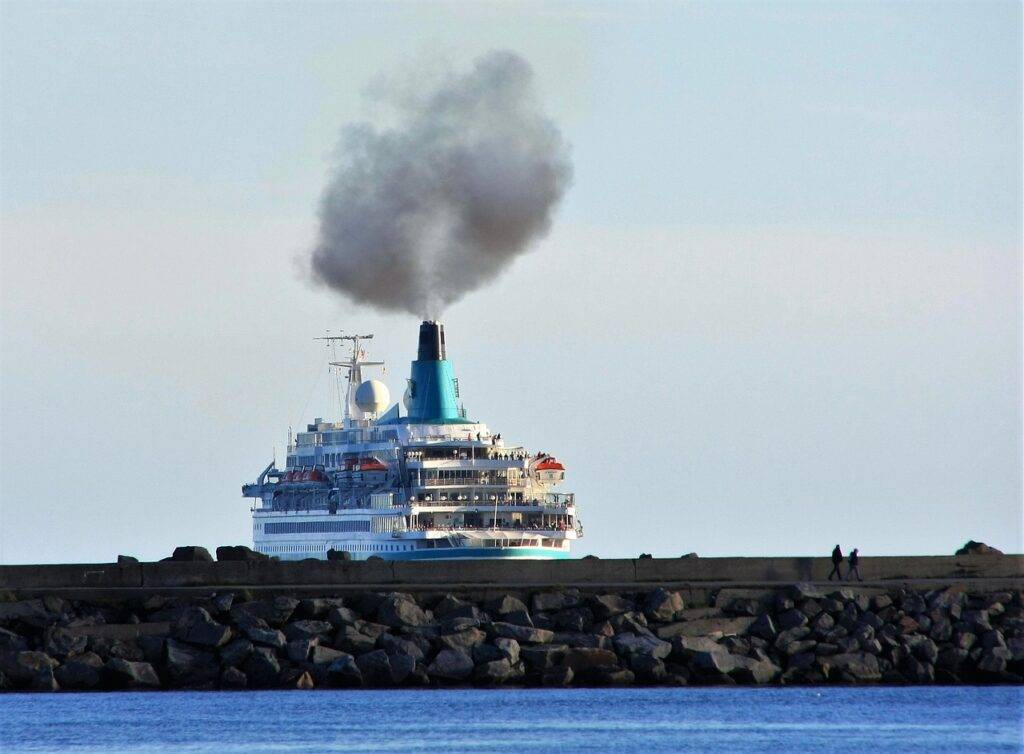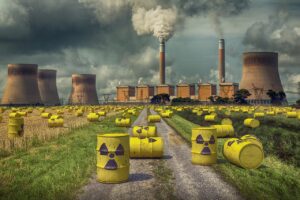
No doubt, globalization has improved the quality of human life by implementing an efficient transportation system and ensuring access to goods and services. This is possible through faster access to technology, improved communication, economic integration, and innovation. However, global business has brought many negative environmental changes including climate change, loss of biodiversity, and deterioration of ecological services. In addition to environmental damage, it facilitates inequality and increases substandard working environments in developing countries which produces goods for developed countries. Hence, it’s very important to understand the facts about the journey of global business to environmental damage.
1. Increase in the consumption of products and services
According to a UN report, more than 65% of total domestic material consumption has increased in the last 20 years. To some extent, this demand has been fulfilled since the productivity of productive resources has increased over the last five decades with the development of new technologies. To fulfill the same, the transportation of raw materials and food across the world is increasing. The increasing transportation has led to an increase in the consumption of fossil fuel which increases environmental pollution and damage naturalness. Transportation has put a potential strain on natural resources. For example, increasing aircraft has increased greenhouse gas emissions which is partially responsible for climate change. Further, these activities increase the consumption of products and services that adds more stress to the environment.
2. Decreasing resources with increasing waste
The industrial waste generated as a result of production, usage, and disposal has increased due to more demand and inefficient management of waste. According to The World Bank, annual waste generation is expected to rise to 3.88 billion tonnes by 2050 from 2.24 billion tonnes in 2020.
The dumping of industrial effluents and solid waste in oceans directly affects many underwater organisms and deposits many harmful chemicals in nature. In addition, many man-made chemicals have been synthesized from natural resources for commercial use and ultimately discarded into the natural environment. This results in the growth of many harmful microorganisms, weeds, and plants which has put further pressure on available land resources. Another example could be plastic, which is of immense use when it comes to packaging, preserving, and transporting goods. But it is one of the major toxic pollutants and a non-biodegradable product that has caused widespread ecological pollution.

3. Decreasing natural resources with increasing manmade infrastructure
To support the globalization of businesses many infrastructures are build-up that results in the loss of naturalness. The mountains are being cut and water flow is diverted to make way for passing tunnels or highways. At present many resources are in a declining phase such as drinking water, coal, oil, natural gases, and biomass. The infrastructure development sector is rapidly growing at a high cost to the environment. Since most widely used construction material in the world is cement, which is a major source of greenhouse gases. As per the Chatham House Report, the contribution of cement to total CO2 emissions are above 8%. Similar to cement, bricks, and tiles manufacturing processes are highly energy-intensive processes that often deteriorate naturalness and disrupt the ecological process. In addition, the extraction of sand is increasing at an alarming rate which led to further stress on nature.
4. Increasing gaseous emissions
Globalization allows businesses to expand in new markets where they can sell their goods and services and get the manpower, raw materials, components, and technology. As per the international panel on climate change (IPCC), CO2 concentration has reached above 420 ppm which is the highest in the last 2 million years. According to a report by International Transport Forum, CO2 emissions will increase by more than 16% in the next 25 years, if transport increases at the same rate. These emissions will significantly impact biodiversity due to increases in environmental pollution, ocean acidification, and climate change around the world.
5. Habitat destruction
The development of infrastructure such as roads, bridges, and canals is crucial for land-based transportation. These developments are often at the cost of habitat loss and environmental pollution. Oil spills are a common example of marine environmental pollution mainly because of sea-based transport systems which often damage the marine habitat. As per the Millennium Ecological Assessment, more than 40% of agricultural land has deteriorated in the last 50 years. This is possibly due to the globalization of businesses.
6. Increasing invasive species
Globalization of businesses is increasing the number of invasive species due to the extensive transport of goods and products. Many living organisms including plants, animals, and microorganisms are getting transported along with the raw materials across the world. As per IUCN, a constantly increasing trend in the number of new invasive species in all taxonomic groups throughout the world has been recorded in the last 200 years. One-third of total invasive species have been recorded after the year 1970 which is a peak period of business globalization for many countries. So, the increasing trend is positively correlatable with the expansion of businesses. Most often foreign species become threats to the local species which results in the loss of native species. The introduction of new invasive species cannot be ignorable since it is a potential threat to food, water, medicine, and other services.
7. Increasing GHG emission
Its well understood and documented that climate change is one of the main environmental problems. Global business is one of the major contributors to most of the environmental damage and issues. It includes greenhouse gas emissions i.e., carbon dioxide emissions from transport and due to industrial activity. Globalization also encourages deforestation which increases greenhouse gas emissions. A positive correlation between CO2 emission and globalization, economic growth, and coal consumption indicate increasing GHG emissions with the expansion of businesses.

8. Loss of biodiversity
A large number of species have become extinct or threatened in recent decades. According to World Wildlife Fund for Nature (WWF), over a 69% decline in wildlife populations including mammals, birds, amphibians, reptiles, and fish in the world is recorded in the last 50 years. Since globalization implies the multiplication of distribution channels, creating new needs and new demands for products around the world. To support the growth of global business more exploitation of new lands, subsoil, and resources is required thus weakening many ecosystems.
9. Economic inequity
Globalization encourages developing nations as well as developed ones to focus on their economic strengths which boosts productivity and efficiency. Unfortunately, such competition and over-specialization can lead to resource overuse such as overfishing in coastal areas. This has contributed to the reduction of fish population and more oceanic pollution, over-dependence on cash crops, and illegal deforestation. The economic inequity due to global business in the world has led to potential environmental damage. Although economic inequality has fallen in the world in the last three decades.
10. Rapid climate change
The slow and steady change in climate is a natural phenomenon since the beginning of the planet and is increasing the complexity. It can be noted that slow and steady changes in any system are always stable and progressive. However, rapid climate change is a major concern due to industrial activities, especially with globalization. For example, the rate of sea level rise is the fastest in the last 3 thousand years because of the rise in the average global temperature. Another example could be the shrinking of the arctic sea ice area. As per IPCC, at present arctic sea ice area and glaciers are the lowest in the last thousand years. These observations are positively linkable with industrialization and climate change.
Globalization has facilitated many nations to use natural resources such as oil, natural gases, and timber as energy commodities. Such nations are using this as their strength which often contributes a large portion of their national budget. At the same time, many nations are not working simultaneously on energy security and environmental conservation. This has led to an increase in environmental losses and damages.
Conclusion
Increasing global connectivity is facilitating and enhancing the quality of human life with a high environmental cost. Hence, the enforcement of new protection laws, regulations, and legislation with public awareness are highly crucial to reduce the negative effects of globalization. The key to all environmental progress and development is public awareness! Therefore more focus on public awareness could minimize the impact of globalization. In addition, learning from the past journey of global business to environmental damage is crucial for future development on a sustainable basis.

